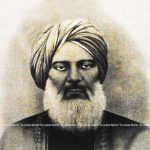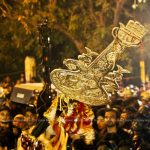Dussehra
The Virtue of Integrity
In India, the unity in diversity is on the full display during Dussehra celebrations. Every state, city, region has its own celebration of the festival, each unique in its own way. From Kolkata’s Durga Puja to the Mysore, Garba-Dandiya in West, Coorg Dussehra’s to the Golu down South to the Bastar Dussehra to the Ram Lila up North, every region has its own way of celebrating the festival. This is a pan-Indian festival that has many colours of celebrations across the country.
Dussehra festival is celebrated on the first day of the “shukla paksha” of the Hindu month of Ashwin. It is celebrated over 10 days in the months of September-October. Dussehra has many reasons for its celebrations. Dussehra marks the victory of good over evil. According to the great Hindu epic Ramayana, Lord Ram slayed Ravana on the tenth day that is Dussehra. It is called as victory of virtue over sin or immorality. Ravana is believed to have abducted Ram’s wife, Sita and was also known as a dictator. The end of Ravana meant end of evil as he was a demon by birth too. The devotees of Lord Rama go to temples and chant mantras.
In many places, Dussehra is observed for 10 days. The famous play of Ram Leela is performed in cultural ceremonies. The effigy of ten headed Ravana is made and burnt in fire. The major characters of the play are Rama, Sita, Lakshmana and Hanuman. In this play, the heroic acts of Rama are vividly expressed. A war takes place between Rama and Ravana where at last, Ravana is killed by Rama, which depicts the victory of “good over the evil”, which is seen by thousands and lakhs of Hindu men and women, popularly known as “Ram Leela”.

Dussehra at Aishbagh, Lucknow
It is also believed that every year the Winters are welcomed with the warmth of festivity commencing from Navratri, an amalgamation of two words “Nava” meaning Nine & “Ratri” meaning Nights. So it is a celebration of nine days where the Hindu deity Durga and her various incarnations are worshipped for nine days for wishing health and prosperity for all. Bengalis celebrate Dusshera as a part of Durga Puja. Vijayadashmi is dedicated to Goddess Shakti, who incarnated in the form of Goddess Durga, a manifestation of the divine energies of the Holy Trinity – Brahma, Vishnu and Mahesh and all the other devas, when they summoned her to say the mighty demon known as Mahishasura and free the world from his terror. On Vijayadashmi, the idols of Goddess Durga are immersed in water after nine days of celebrations and worship. It is believed that people in the state of West Bengal had adopted Durga as their daughter and thus, she visits her parental home every year in Navratri. At many places across the country, people arrange for “kanya bhoj” at their places or at temples, where as a mark of respect for the Goddess, young girls are offered lunch and new clothes as gifts by the devotees.
In the Northern India, huge fairs are organised and effigies of Ravana, Meghnath and Kumbhkarna are burnt at Ramlila maidans. In the Southern India, in the states of Tamil Nadu and Kerala, Vijayadashmi holds a very special significance. This day is considered auspicious for starting a person’s education or any form of art, such as dance or music. Saraswati Puja is conducted on the day, when the formal commencement of education for kids takes place. It is called ‘Vidya aarambham’. In the states of Karnataka and Andhra Pradesh, Dusshera is celebrated with huge fanfare. Huge processions are taken out in both the States. Mysore is richly decorated and a number of elephants are decorated and brought in. In Nepal, Nepali Hindus also celebrate this festival in a big way. In this festival the emphasis is on family ties and they put red colored kumkum on each other’s forehead.
During this, women take a central stage and have a celebration of feminine qualities such as dance, music and decoration. It is also a reminder of the status of women in India in the past and how they held lot more power in ancient India. Although Dussehra is celebrated in different ways across India, the intent remains the same – to spread good cheer and celebrate the victory of good over the evil.
Dussehra is one of the longest and diverse festivals of India. It celebrates art like no Indian festival. But sadly the festival is losing some of its ground in India as our generation doesn’t fully grasp the story behind this awesome festival. The modern lights are dimming the allurement of time tested rituals. In the loud music, we have lost the festival where everything was more ardent rather than a trend. The colourful galleries of distinguished virtuosity are now left empty. And in this run, the greatest losses are to the artisans who have been earning their livings by their skills as their family profession over the ages. Not only the art, but also comes along the variety of cuisines of this festival that the next generation would not experience the taste of due to termination of workmanship. The cognizance should be laid on this gray part, since it is a festival of togetherness. This part of the era should not be left behind and more consideration should be given along with the new notions to conserve them.
There are many other stories associated with the festival of Dussehra. Festivals in India encompass and try to inculcate and spread the message of benevolence, peace and love. This festival boosts the spirit of everyone. It gives us courage to fight for our right, no matter how poor the situation seems to be. It keeps our belief alive that the victory of the righteous and virtuous is certain. If the people keep in mind the beautiful and meaningful messages throughout the year, peace and harmony is possible all the year around.
Shiwali Sethiya
(Published in The Lucknow Observer, Volume 2 Issue 19, 5th October 2015)




